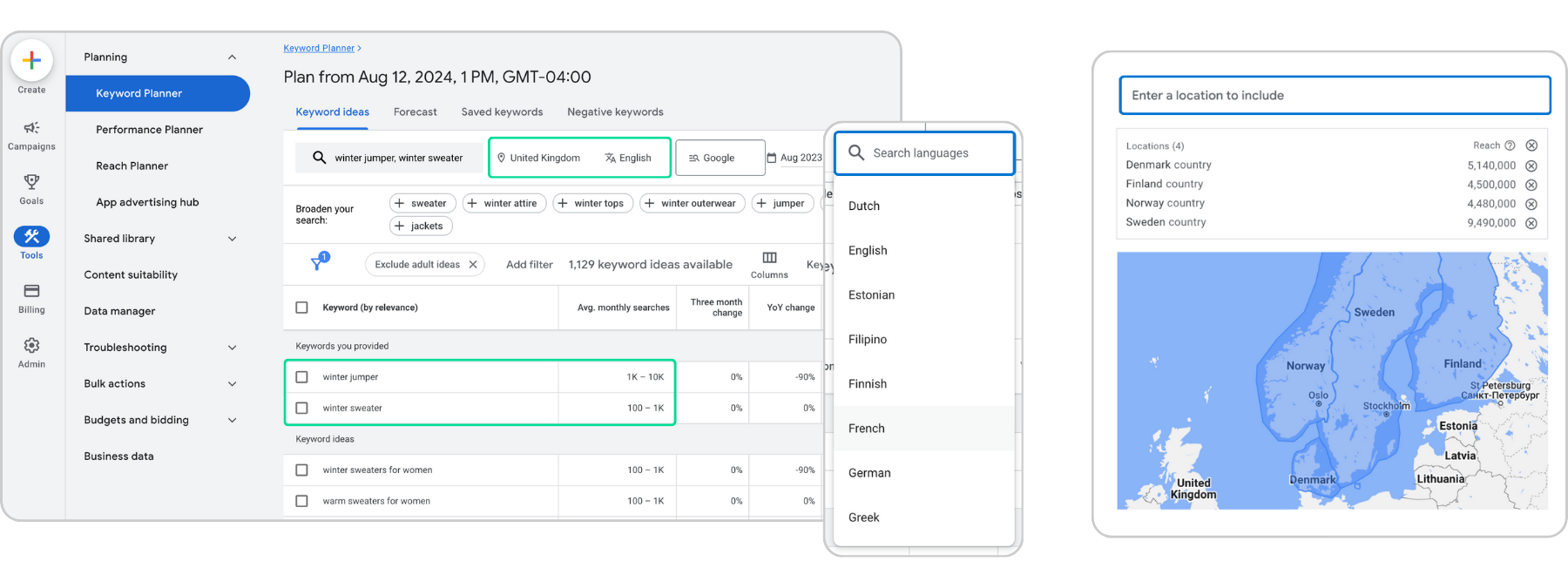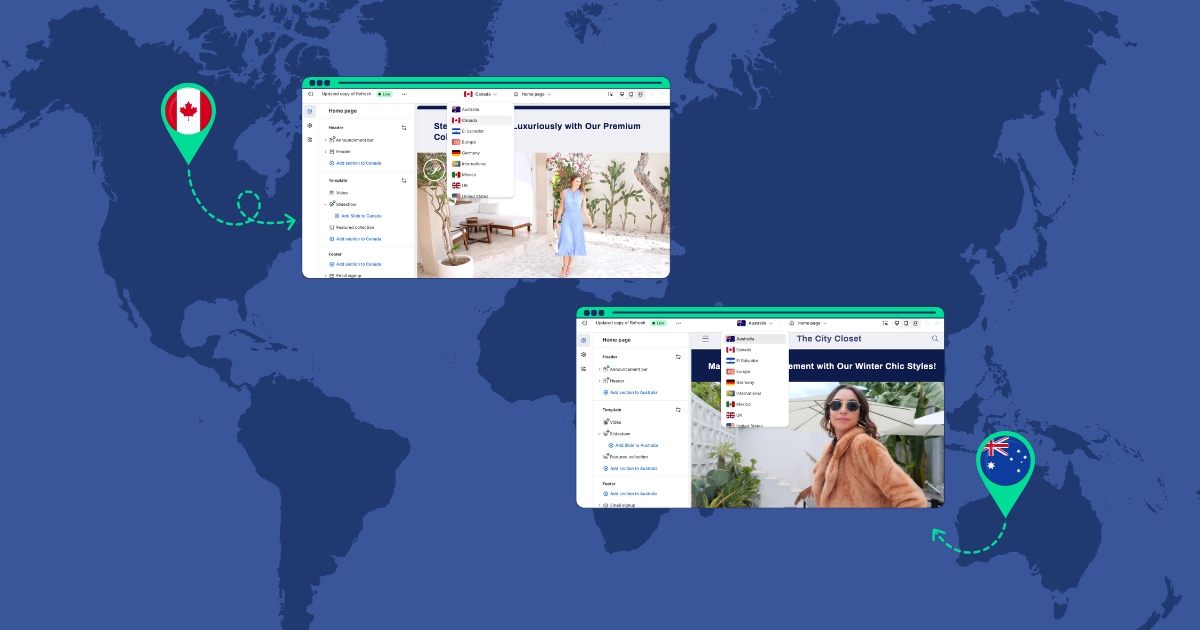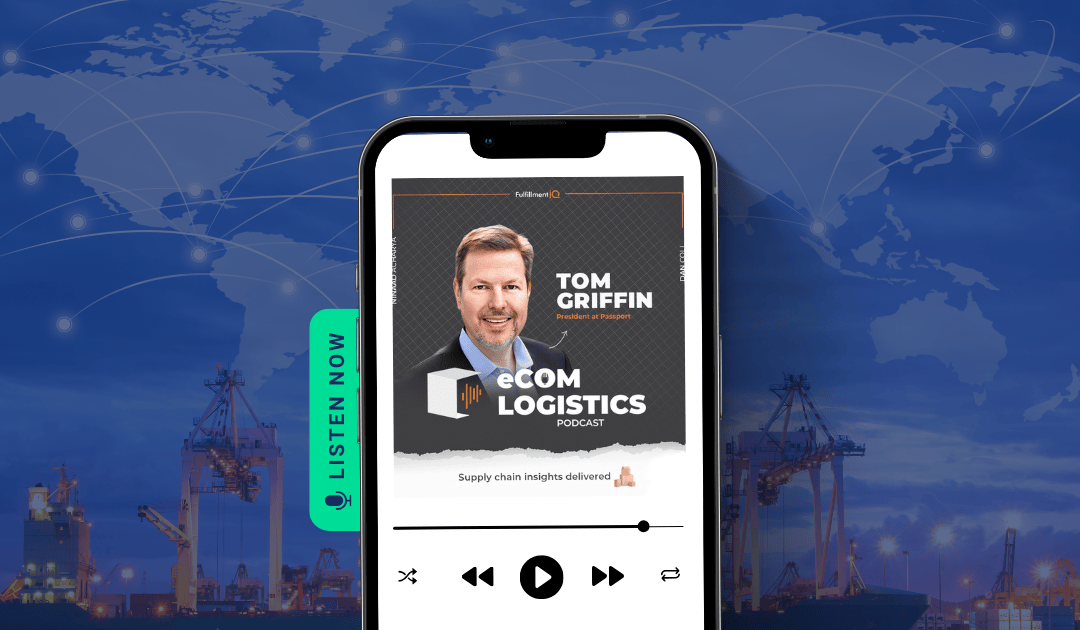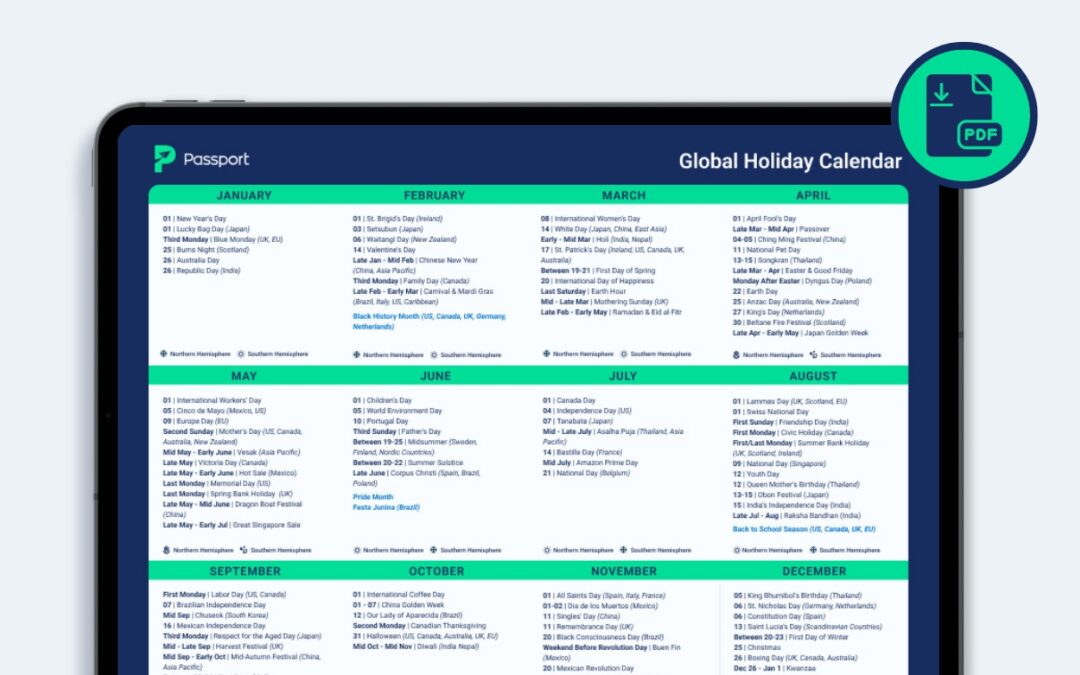Shopify makes it easy to reach consumers all over the world with powerful tools for global commerce. However, expanding your Shopify store internationally requires more than just replicating your domestic strategy. To succeed on a global scale, it’s important to embrace a local approach for each market. By tailoring your content, pricing, and shopping experience to resonate with different audiences worldwide, you can amplify your international sales and drive significant growth.
Below, we’ll explore the benefits and key strategies for effective Shopify localization.
What is Shopify Localization?
Shopify localization entails customizing your online store for various international markets. This includes adjustments like translating content into local languages, displaying prices in local currencies, and adjusting product offerings and promotions to align with regional preferences and seasonality.
Benefits of Localizing Your Ecommerce Store
- Higher Conversion Rates – Making customers feel comfortable with familiar language and relevant content reduces friction during the buying process, leading to reduced cart abandonment and more completed purchases.
- More Repeat Purchases – Providing a positive experience for international buyers fosters loyalty, encouraging them to make repeat purchases and recommend your brand to their peers.
- Competitive Advantage – Optimizing your ecommerce store helps you stand out in a crowded market, attracting new customers and outperforming competitors with a generic approach.

7 Key Shopify Localization Strategies
To help you effectively localize your ecommerce website, we’ve put together seven essential strategies you can implement on Shopify.
1. Customize Landing Pages
Shopify offers powerful customization tools that let you create landing pages tailored to individual markets. This approach helps your content resonate more effectively with your audience.
Adapt your website to local preferences by highlighting best sellers based on regional data, featuring seasonal product recommendations, and more. [Learn how to create custom landing pages on Shopify]
2. Implement Language Translation & Adapt Content
Translating and adapting content is essential for connecting with international customers. Update your web copy to reflect the local language and make sure that messaging and visuals are culturally appropriate.
Shopify offers the Translate & Adapt to assist with translations, but it’s important to have a native language speaker manually review your site for accuracy. The app is free for the first two languages, with additional languages available for a fee.
3. Enable Local Currency & Payment Options
Offering local currency and preferred payment methods is essential for a smooth checkout process. Customers are more inclined to complete a purchase when they can pay in their own currency using familiar payment options.
Shopify Payments enables you to display prices in your customers’ local currency through automatic conversions in supported countries. It also supports over 100 payment providers worldwide, including credit cards, debit cards, gift cards, and buy now, pay later (BNPL) options.
4. Align with Seasonality & Holidays
Aligning imagery and messaging with seasons and holidays keeps your content relevant. Customers are more likely to respond to offers that resonate with their local context.
For instance, summer promotions work well in Canada in July, while winter promotions are better suited for Australia. By timing campaigns with regional celebrations, you strengthen your connection with your audience and encourage engagement.
5. Tailor Pricing Strategies
When selling internationally, additional costs like shipping fees, duties, and taxes need to be considered. Customary practices for displaying these costs vary by region, and unexpected fees at checkout cause hesitation and cart abandonment.
For example, in the EU and UK, shoppers expect taxes to be included in the product price. In this case, you can localize your pricing strategy by incorporating duties and taxes into product prices and charging a flat-rate shipping fee to create a smoother shopping experience. [Get tips on developing an effective international pricing strategy]

6. Refine Local SEO
To further localize your content, consider incorporating keywords that are common in your targeted regions. Using terms that local customers are likely to search boosts your website’s visibility and connects you with customers searching for products like yours.
To illustrate this, let’s say you’re a clothing brand targeting customers in the UK. Adapting your messaging to use the keyword ‘winter jumper‘ instead of ‘winter sweater‘ is more impactful, as ‘jumper‘ is the term they’re accustomed to. Google offers a free Keyword Planner tool where you can select different countries and languages to identify the most relevant search terms for your audience.
7. Leverage A/B Testing to Optimize
There isn’t a one-size-fits-all solution for localization; what works well in one country may not be as effective in another. A/B testing allows you to experiment with different strategies to find the one that performs best for your brand. Partnering with an internationalization expert like Passport can help you develop, implement, and refine localization strategies to ensure your ecommerce store is optimized in every market.
A notable success story from a Passport customer features a brand that launched in the UK and initially decided not to include value-added taxes (VAT) in their product pricing. After our team advised them to test VAT-inclusive pricing and implemented the change, the brand saw an immediate 30% increase in conversion rates – a substantial boost that’s been sustained over time.
Ecommerce Localization Made Easy
Growing your ecommerce brand globally goes beyond just launching your website in new markets – it requires a thoughtful, region-specific approach. However, developing an effective localization strategy can be challenging, especially with limited personnel and resources. That’s where partnering with an internationalization expert like Passport comes in. We guide you in implementing Shopify localization strategies that drive higher conversions and bring in new customers, all while ensuring a seamless shopping experience worldwide.
For many businesses, international sales represent only a small fraction of their total revenue. Passport Global changes that with end-to-end solutions designed to simplify global commerce. We’ve helped brands like Carpe increase their cross-border revenue from 5% to 10% – and you can too.
With Passport Global, your dedicated growth advisor will help you test localization strategies to boost conversion rates and attract new buyers. Then, a seamless shipping and support experience will turn those buyers into loyal customers. Plus, Passport Global is backed by our hands-on compliance team, who manages all international tax and duty complexities so you can focus on growing your business.
Whether you’re entering new markets or refining your existing operations, Passport offers the expertise and support needed to achieve your international growth goals. Ready to reach your global potential? Request a demo today to see how Passport can elevate your ecommerce strategy.





